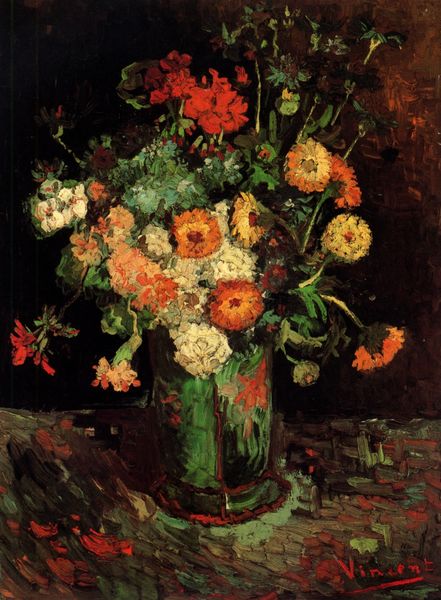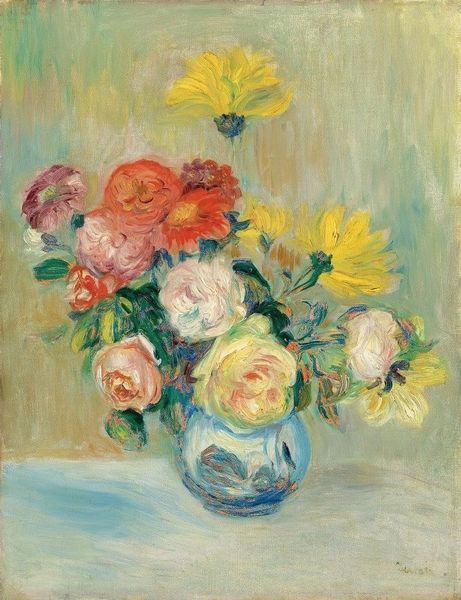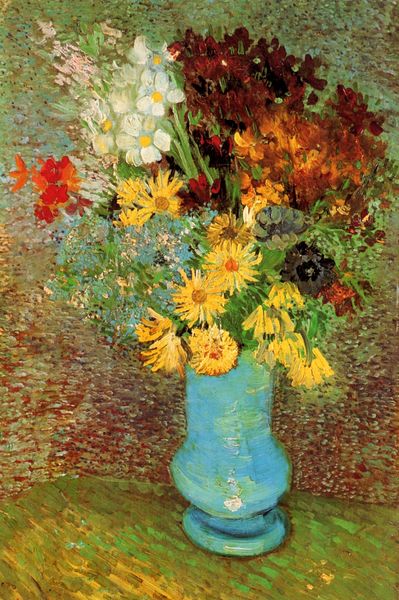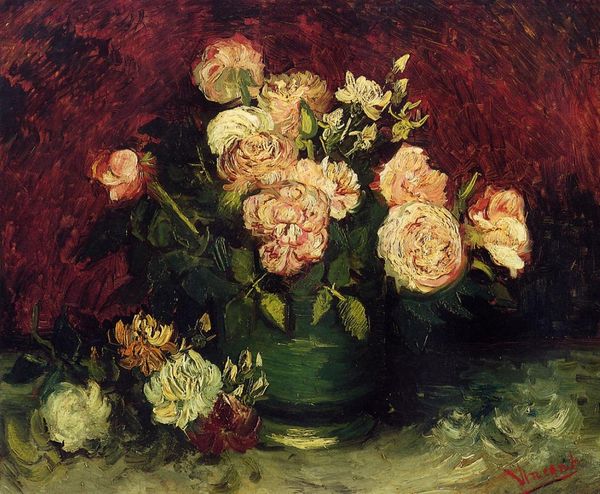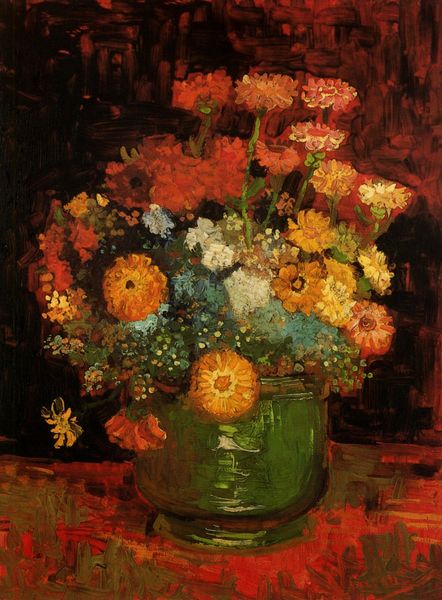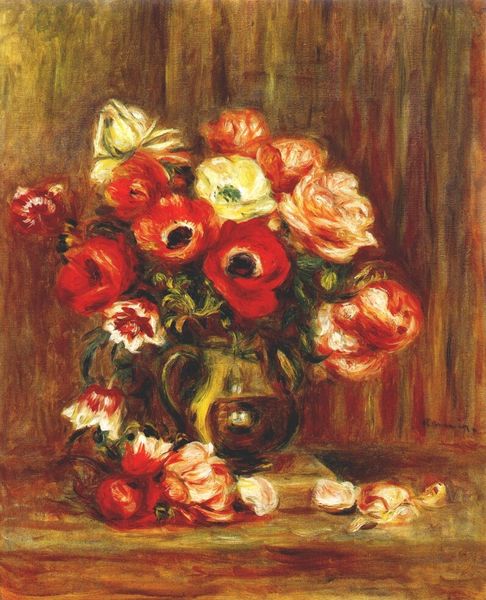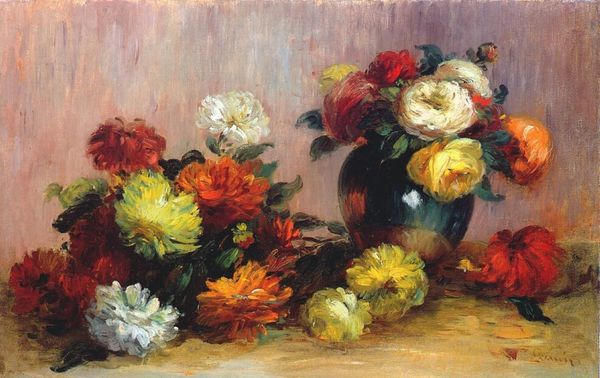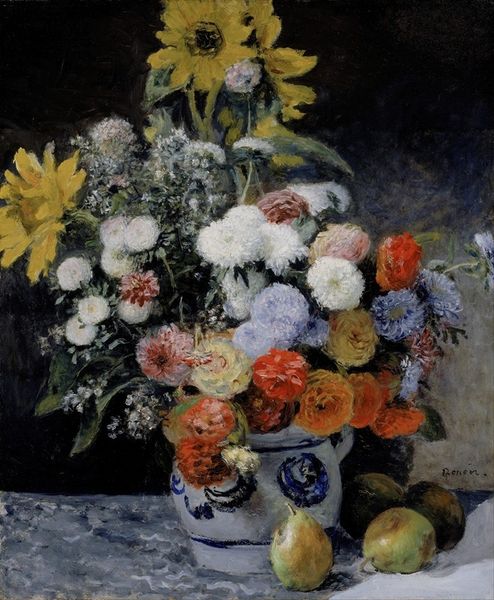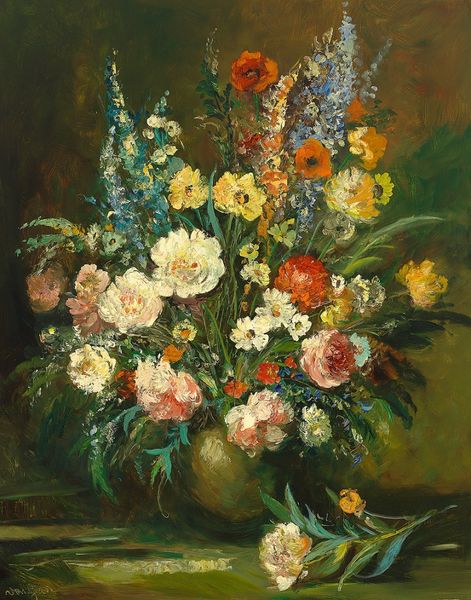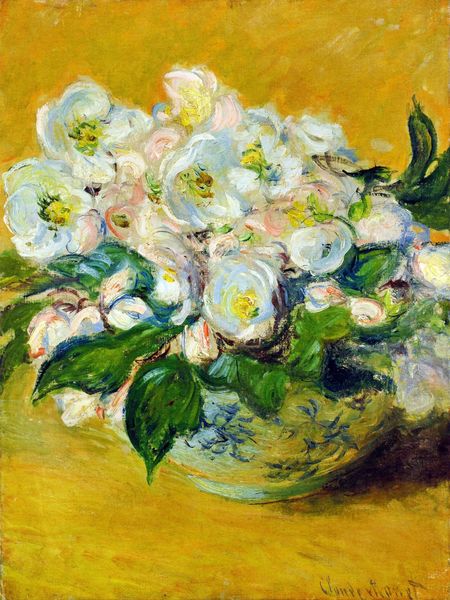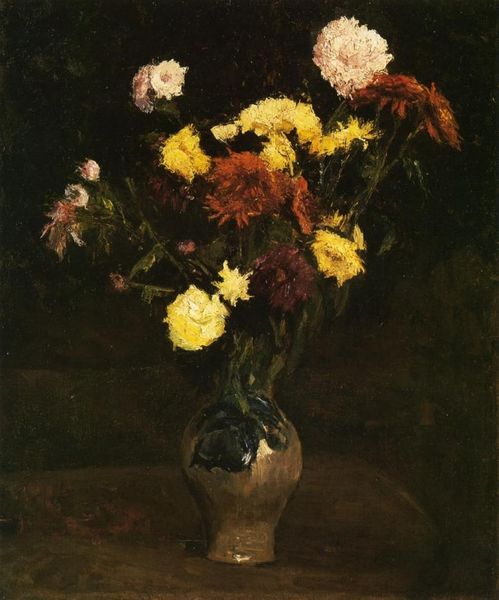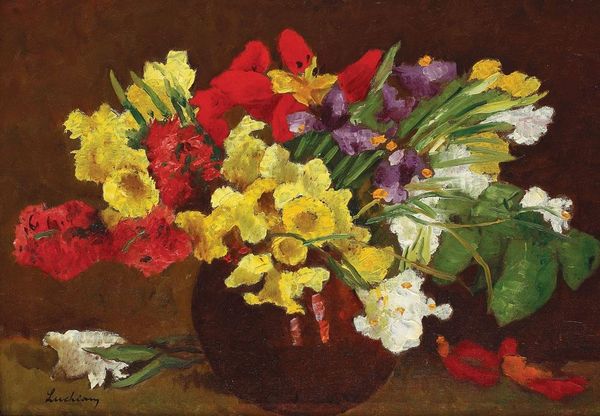
Still Life with Roses and Sunflowers 1886
0:00
0:00
vincentvangogh
Kunsthalle Mannheim, Mannheim, Germany
oil-paint, impasto
#
still-life
#
oil-paint
#
landscape
#
oil painting
#
impasto
#
post-impressionism
Copyright: Public domain
Curator: Take a look at Van Gogh’s “Still Life with Roses and Sunflowers” from 1886, currently housed at the Kunsthalle Mannheim. Editor: Immediately, I notice the texture—the impasto is so thick you could almost pick the paint off the canvas. It brings a vibrant, almost tactile quality to the blooms. Curator: Absolutely. Knowing that this work was painted while Van Gogh was in Paris gives it significant context. He was exploring new techniques and encountering different artists like Monet and Renoir. We can see his evolution toward a more expressive style, fueled by a desire to communicate emotional truth through his art. Editor: I agree; the composition, the relationship between the vase, flowers and background creates tension through contrasting textures. The dark shades bring the painting an element of unease... something feels unbalanced to me, yet compelling. Curator: Considering Van Gogh's mental state during this period and his intense personal relationships, we can see how the vibrant yet somewhat melancholic palette speaks volumes. Roses often symbolize love, while sunflowers can mean gratitude, but also loyalty; in the arrangement, they could also suggest the complexities and contradictions in his life and social relationships. Editor: I see what you're saying. Shifting from the emotional undercurrents to a structural viewpoint, one notes that there isn't really one focal point in the painting—a balanced asymmetry, one might say. The forms meld together instead of being distinct objects of display. Curator: And that, in a way, captures Van Gogh's overall struggle, always hovering on the periphery, observing and capturing a certain tension and rawness in the everyday life he painted. His exploration of painting allowed him to develop his craft, finding a vocabulary for the feelings he experienced. Editor: Precisely, but that intense subjectivity is articulated through compositional balance—or lack thereof—a constant interplay of form and the suggestion of something deeper and less straightforward, a feeling, an intention, a narrative all held within the frame. Curator: Well, I'm glad you brought out the intricacies of the composition in that way, that’s a fascinating lens through which to consider Van Gogh's expressive language. Editor: And understanding the social and emotional context provides valuable grounding for decoding Van Gogh's visual vocabulary, I must admit.
Comments
No comments
Be the first to comment and join the conversation on the ultimate creative platform.
